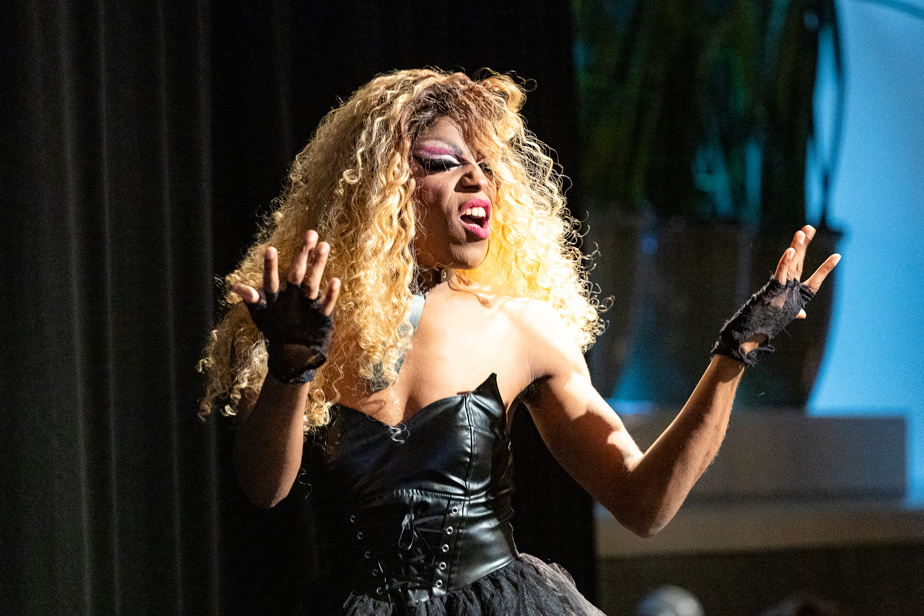Several representatives from the sector met this week as part of the launch of a brand new cultural back-to-school season: the accessible back-to-school season.
Because people who are deaf, hard of hearing, blind, partially sighted, have reduced mobility or are neurodivergent also need art in their lives. And because several presenters, including the Agora de la danse, the Théâtre La Licorne and the Centre du Théâtre d’Aujourd’hui, have recently been offering various accessibility measures that are still little known, this first edition of MTL arts accès, organized Thursday evening at the initiative of the MAI (Montréal, arts interculturels) and Danse-Cité, aimed precisely to bring together all these wonderful people, in a spirit of exchange and sharing, festive and inclusive, it goes without saying.
Organized with the support of the Conseil des arts de Montréal and the Maisons de la culture de Montréal, this special back-to-school season was also celebrated differently. In addition to the usual protocol speeches, several interpreters were present, whether to translate live into sign language (Quebec: LSQ; or American: ASL), offer audio description (still live) or accompany people with special needs.
That’s not all: the launch show, a drag number performed by deaf performer Rosèna Solèy, to a song by Demi Lovato, was also audio-described live by choreographer Georges-Nicolas Tremblay.
A unique moment for beginners, mixing art, emotion and inclusion (and improvisation!), embodying all the importance of the approach in question. “She jumps on the stage […]lets off steam, shakes his hair from right to left […]she sways her hips, carried away by the rhythm…” A semi-replica of the artist’s costume was also on display, to allow blind people to touch it.

PHOTO DOMINICK GRAVEL, THE PRESS
Alexandre Vallerand, one of the first Quebec actors with cerebral palsy, hosted the evening.
The evening was hosted by three special artists: Hodan Youssouf, an actress, dancer and born deaf; Alexandre Vallerand, one of the first Quebec actors with cerebral palsy; and Myra Hountondji, a dance artist and consultant in defense of the rights of people with visual disabilities. All three delivered vibrant messages about the importance of accessibility to the arts.
Among other arrangements, or inspiring “little touches”, as Alexandre Vallerand said, which make a world of difference for the main parties concerned, it should be noted: a separate room offered a quiet space, including anti-stress balls and soft lighting. An art therapist was present in the exhibition room to describe the content of Connecting from the Inside Outworks by the artist My-Van Dam.
Accessible offer
In total, in addition to MAI and Danse-Cité of course, around twenty presenters from various backgrounds (dance, theatre, museum, opera, youth) were present here, to present their accessible programming to this so-called “capacity diversity” audience.
Clearly, we feel that the environment has been open for three or four years. And this is part of this era of diversity, equity and inclusion.
Maud Mazo-Rothenbühler, head of development at Danse-Cité, on the sidelines of the ceremony
Let us also mention Espace Go, Espace Libre, the Phénomena festival, La Chapelle, the Maison Théâtre, the MAC, the Opéra de Montréal and Place des Arts. In the long term, we also hope to reach literature through libraries, and expand the offerings on the visual arts side.

PHOTO DOMINICK GRAVEL, THE PRESS
The event’s co-organizers Claudia Parent (MAI, center) and Maud Mazo-Rothenbühler (Danse-Cité, left)
What is it? We are talking about performances of shows offered in live audio description, in sign language, or in relaxed performances. For example, the PHI Foundation now organizes creative workshops in sign language (LSQ), tours with interpreters, and its exhibition guide is offered in Braille.
On the Rideau Vert side, four shows from the 2024-2025 program will be offered in live audio description, three in sign language, and this, during selected performances, at a reduced accessible rate. An evening with surtitles for the hearing impaired is also on the schedule. This accessible programming is also “extremely popular”, says Erika Malot, the artistic coordinator, who was encountered on site.
We have underestimated the needs, and especially the interest of different audiences, she says. There is a lack of supply and people are hungry for culture. […] These audiences have long been ignored.
Erika Malot, artistic coordinator
Among them, Martine Bédard, who has been visually impaired for six years. “I love the arts, I’ve always loved the arts. When I lost my sight six years ago, I thought my relationship with the arts was over. Watching a movie, going to the theatre, it was over.” And then three years ago, the Rideau Vert committed to making its shows accessible. “And I started again. It was a masterful, extraordinary experience, being able to sit in a room and hear theatre.” […] It’s priceless! It gave me back my taste for culture, it’s priceless. I’m constantly in the dark, everything is in my ears, in the feeling. Listening to audio books is fun, but being in the presence of people, experiencing the same thing, it’s magical! I feel included, I’ve been given access to life again!
Check out the 2024-2025 programming of the Accessible Cultural Calendar
The absentees
Two major absentees: the Théâtre du Nouveau Monde (TNM) and the Théâtre Duceppe. Contacted by The Pressthe latter indicated that it has an “equity, diversity, inclusion and accessibility” policy, “but it is true that we are less advanced on this issue than some of our colleagues,” commented Jean-Simon Traversy, co-artistic director. If no show is yet translated into sign language or offered in audio description, a performance ofFires with surtitles should be announced soon. For its part, the TNM “puts its values of inclusion into practice, particularly in its cultural accessibility programs and its theatre mediation activities,” we were told in writing. The major renovations will have greatly mobilized the teams in recent years, but the TNM is fully supportive and greatly inspired by the actions of the cultural community and wishes to improve its measures in the near future.”
